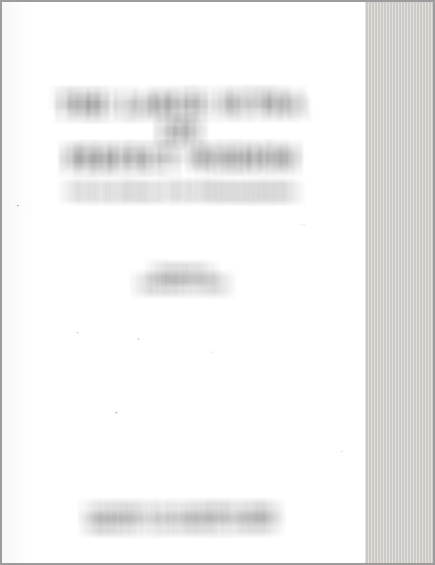Panchatantra: A reflex of Arthashastra
by M. N. Indrani | 2003 | 42,495 words
The essay studies the Panchatantra in relation to the Arthashastra by proposing that that Indian fable literature divides into educative and entertaining narratives, both traced back to the sacred Vedic texts. It highlights the 'Pancatantra' and its kin as representative of educative stories promoting ethical conduct and worldly wisdom through tale...
The concept of Durga (Fort)
In the elucidation of the elements of the state, one can see again, that the ancient Indian political thought was continuous. When we first come across the term durga meaning a fort in the Rgveda, it was used in the sense of a fort, or a stronghold. It was synonymous with pur, meaning a rampart, or fort, or stronghold. That even in the Vedic times; there were two kinds of forts is clear from the use of the terms Prthivi or broad, and urvi, or wide forts. Forts of sum-dried bricks or stone (asmamayi) are mentioned in the Rgveda. That fort in the Rgvedic days were of considerable size is proved by the phrase "with a hundred walls" (Satabhuji). Their self-sufficiency is suggested by the term "full of kind" (gomati) showing that forts were filled in with cattle evidently to provide the defendants with food in case of a prolonged siege. While dealing with the measures conducive to peace or one's protection, Kautilya says in the absence of any help from superior kings during the attack of enemy, he should seek
149 shelter inside a fort, wherein his enemy cannot offer any obstruction.71 The fort (durga) is the fourth element of sovereignty which Kautilya has discussed in detail in the third and fourth Adhyayas of the second Adhikarana. Therein, he has dealt with the method of constructing the fort, buildings within the fort etc. Here itself, a specification is shown that defensive fortification has to be made by king to protect his kingdom against an enemy in the war. Such forts on the grounds are preferred as best fitted for the purpose. 72 The main purpose of fortification is referred to by Visnusarma with a very few words as below: Of course, some of the essential elements of the fort that are explained by Kautilya, are taken into account in the Pancatantra. To be explicit, the story of Bhasuraka (a lion) and a rabbit in the Mitrabheda, reads some references to the fort. The rabbit who was engaged in accomplishing his plan of killing Bhasuraka, told the latter with credible words, that not only himself but all animal-subjects were terrified by another lion 71. sahayabhave durgamasrayeta yatramitrah prabhutasainyo'pi bhaktayavasendhanodakoparodham na kuryat | Arthasastra VII Adhikarana (Sadgunyam) XV Adhyaya, p. 379. 72. caturdisam janapadante samparayikam daivakrtam durgam karayet | Arthasastra II Adhikarana (Adhyaksapracara) III Adhyaya, p. 73.
150 which had taken shelter in the fort. In this context, the rabbit said that an enemy living in the fort remains invisible. The work which could not be accomplished by even thousands of elephants or lakhs together horses, may successfully be done by a king resorting the fort.73 Further, basing on the approval of the scholars versed in the science of polity, Visnusarma remarks that a bow-man though stationed alone behind a rempart of a fort, is capable of resisting a target of even a hundred soldiers of the enemy.74 So also, referring to a puranic legend of Nrsimha incarnation, it is further said that formerly Indra, due to the fear from Hiranyakasipu had a fort built up for him through the divine power of the divine architect - Visvakarma at the advice of his preceptor Brhaspati.75 At the same time, Visvakarma declared a boon that he who has the fort as one of the elements of soveriegnty, becomes a victorious; and at the instance of this, thousands of forts were 73. na gajanam sahasrena na ca laksena vajinam | yatkrtyam sadhyate rajnam durgenaikena siddhyati || Pancatantra, Mitrabheda, verse 251, p. 102. repeated in Mitrasamprapti Verse - 14, p. 74. satameko'pi samdhatte prakarastho dhanurdharah | tasmad durgam prasamsanti nitisastravicaksanah || Pancatantra, Mitrabheda, verse - 252, p. 102. 75. • pura guroh samadesaddhiranyakasiporbhayat | sakrena vihitam durgam prabhavadvisvakarmanah || Pancatantra, Mitrabheda, verse - 253, p. 103.
151 constructed on the earth. The essentiality of the element of fort providing protection to the king from the enemies, is further emphasized in a reverse effect i.e. just as a serpent devoid of poisonous teeth and an elephant devoid of rut, could be captured easily. So too, a king without fort could easily be attacked by any one. 76 All these details point to the necessity of fort to the king for his being successful in the administerial dealings. Besides, it is worthy of note that Kautilya has taken an element of strength, place and time into account suggesting that either a conqueror or an enemy who has resorted to the fort should make his appearance outside in urgency of need. If otherwise, one is killed by the other. Ofcourse, Kautilya has given equal importance to all these three elements as each is helpful to the other; while the opinions of other scholars as quoted by Kautilya indicate that one is better than the other. But, Kautilya's statement in this in this regard holds more significance. This is a suggestive sense of the opinion of Kautilya's teacher as below: "Some say, that place is the best for the reason that a dog, seated in a convinient place can drag a crocodile, and that a 76. damstravirahito nago madahino yatha gajah | sarvesam jayate vasyo durgahinastatha nrpah || Pancatantra, Mitrabheda, verse 255, p. 103. repeated in Mitrasamprapti verse - 13.
152 crocodile in low ground can drag a dog. Others say that time is the best for the reason that during the day-time the crow kills the owl and that at night, the owl the crow. 77
